
Little Hearts : Suriya Balaji DOP!
Sep 19 2025
Suriya Balaji – A Fresh Eye that Turned Little Hearts into a Celebration
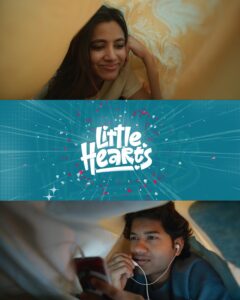
When Little Hearts, a modest rom-com directed by Sai Marthand and produced by Aditya Hasan (ETV Win Originals), hit the screens, no one expected it to become a sensation. But what followed was nothing short of a celebration—audiences laughing together, families enjoying its warmth, and critics praising its refreshing simplicity.
At the center of this success stands debut cinematographer Suriya Balaji, whose visual sensitivity transformed a small film into a big experience. His story is an inspiring reminder of how the eye of a cinematographer is not merely about cameras and lighting, but about seeing life differently and turning those observations into cinematic poetry.
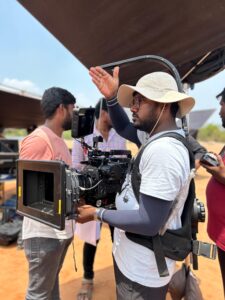
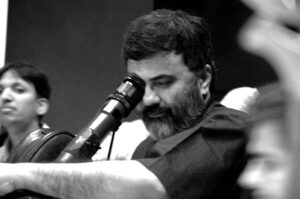
Journey with Suriya Balaji
Tell us about your childhood and how the visual arts entered your life.
Suriya Balaji: My father was my first inspiration. He was deeply passionate about photography, though not a professional. He admired PC Sreeram sir immensely—he would point out his frames and explain how light could create magic. I grew up listening to that. By 6th or 7th standard, I had already started taking pictures on the cameras we had at home—street life, people, small everyday moments. That was my earliest training: observing life and finding beauty in ordinary things.
So your father shaped your vision as a cinematographer?
Suriya: Definitely. For him, photography was not just about pictures—it was about emotions. Watching him admire PC sir’s work made me understand that a frame can hold a feeling, not just an image. That lesson has stayed with me. Even today, when I look through a viewfinder, I try to feel what the audience might feel when they watch it later.
How did you make the transition from still photography to cinema?
Suriya: During my Visual Communication course, I interned with Indian Express. One of my assignments was to cover Pongal festivities. I captured the festival in its raw spirit—children flying kites, families shopping for sugarcane, the colors of tradition. When those pictures were published, I realised photography could tell stories, not just record events. That was the turning point. From then on, cinema became my calling.
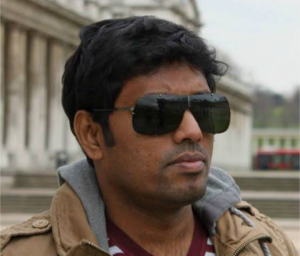
What shaped your craft before becoming a DOP?
Suriya: I began as an assistant cameraman, working on films like Savyasachi, Venky Mama, 90ML, Maestro, Bangarraju, Vaathi, and Devara. I was fortunate to learn from masters—J. Yuvraj, Prasad Murella, and Rathnavelu (Randy).
- From Yuvraj sir, I learned discipline and control over craft.
- From Prasad sir, I learned how to handle people and moods on set.
- From Randy sir, I learned scale, how to create grandeur yet keep emotion alive.
These experiences matured my eye. I started noticing how a shadow could carry weight, how light falling at the right angle could change the meaning of a scene.
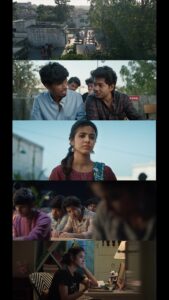
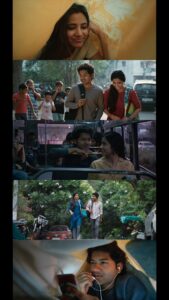
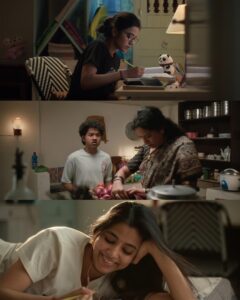
Coming to Little Hearts, how did you define its visual tone?
Suriya: We wanted to keep it real but not raw—something natural yet slightly dreamy. A midway between slice-of-life and cinematic. For example, even in scenes with a cool light source like a tube light, I made sure the characters carried a warm glow. It created intimacy, like life with a touch of magic.
To bring this balance alive, I chose Cooke Panchro lenses. Their warmth and gentle highlight roll-off made every frame human and organic. They don’t sharpen reality; they soften it—exactly what a youthful rom-com needs. For me, the Panchros weren’t just lenses, they were silent collaborators that gave the film its emotional softness.
Guerrilla filmmaking was also part of the process, right?
Suriya: Yes. For planned sequences we used the Alexa Mini with Cookes, but for Hyderabad and Bengaluru montages we went guerrilla with the Sony FX3—minimal crew, no lights, no permissions. We shot like regular people walking in the city, even inside Numaish. That spontaneity gave the film its life.
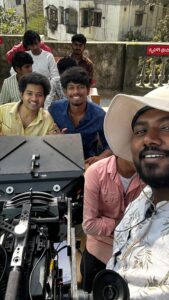
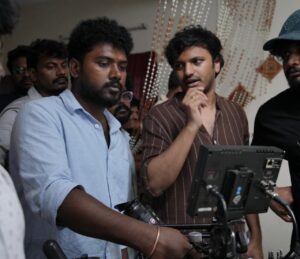
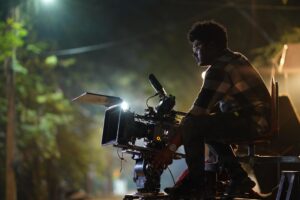
The reception has been described like a festival. How did that feel?
Suriya: It was beyond anything I imagined. From the premiere itself, we knew something special was happening. Later, when we saw packed theatres and heard the laughter, it felt like a celebration. The best moment was watching it with my parents—my father, who first showed me PC Sreeram’s frames, was seeing my own work on the big screen. That was the most emotional moment of my life.
How do you think the eye of a cinematographer evolves?
Suriya: The eye changes as life changes. As a child, I only saw shapes and colors. As a student, I saw stories. As an assistant, I saw discipline and teamwork. Now, as a DOP, I see emotions first. For me, every frame should carry a feeling. That’s how I want to keep evolving—by sharpening not just my technical skills but my emotional vision.
Looking forward, what do you want to explore?
Suriya: Little Hearts gave me a beautiful start, but I see it only as the beginning. I want to take on new challenges, explore different visual languages, and keep pushing myself. My dream is simple: to create visuals that stay in people’s hearts, the way PC Sreeram sir’s frames stayed in my father’s heart and inspired me as a boy.
Drafted by
CJ Rajkumar
Author/ Cinematographer
